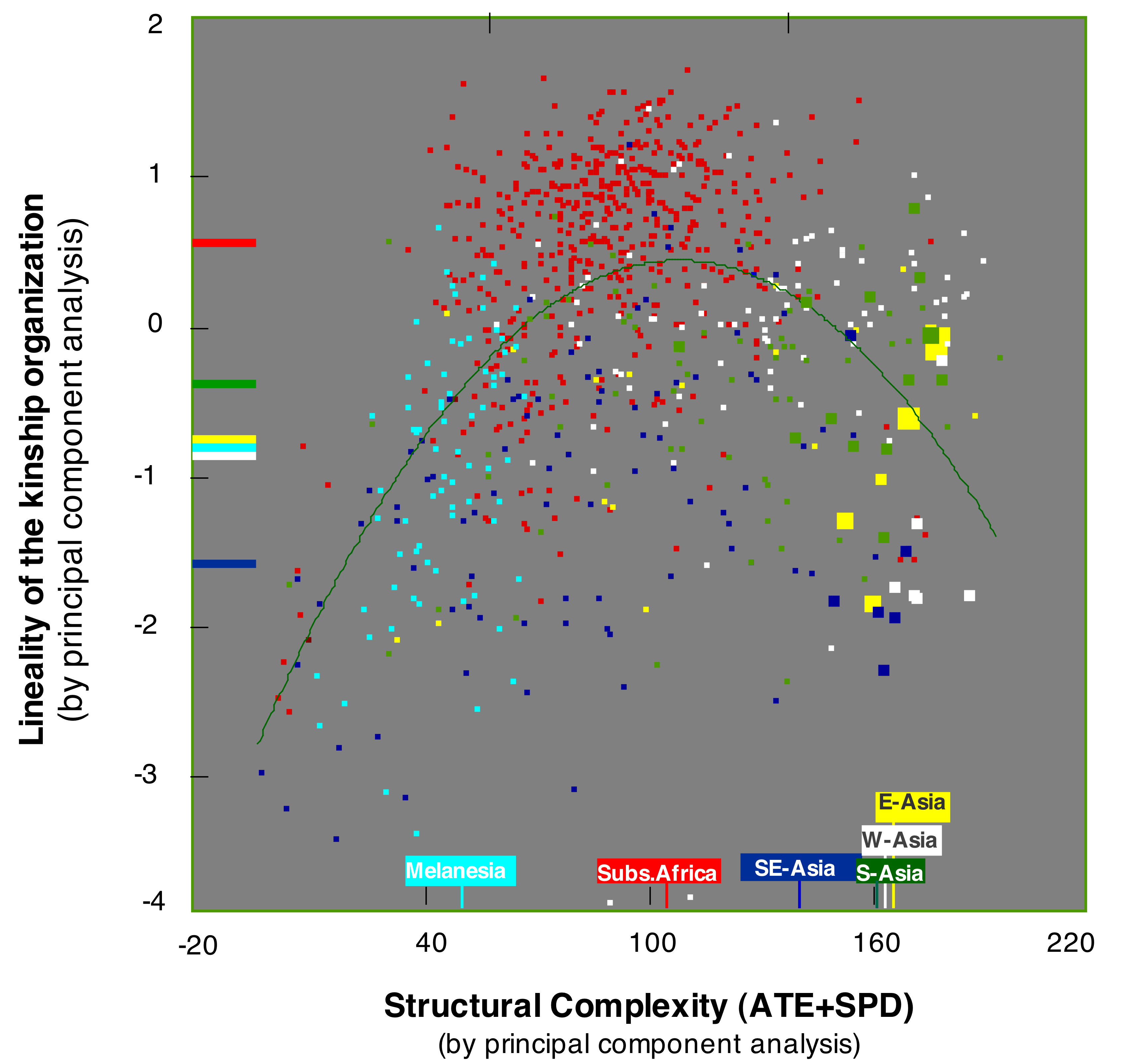Lineage Structures
Lineage Structures
Lineage Structures is an index of the genealogical extendedness of social aragements through four indicators. They measure the extension and tightness of institutionalized local networks. Together, they stand for structural foundations of a genealogical orientation.
The organization of society along lineage lines is an important, but by far not the only factor for the cultural definition of relevant others in society. The rules under which social legatures traditionally were constructed vary greatly. They define different principles of social integration and have a great impact on the development of national societies since 1960.
These are the four variables:
- Extent of transfers of wealth for marriage (R 6)
- Complexity of marital composition (R 9)
- internal segmentation of local groups in terms of marriage and kinship (R 15)
- extendedness of descent rules of (R43)
The four variables are consistently and significantly (.01 > p) correlated.
Map: Lineality, or the strenght of extended genealogical ties
In spite of some noticeable exeptions (e.g. Bangladesh on the one hand, Mauretanie on the other), countries with strong pre-colonial state organization show a functional reduction of genealogical ties. Noteworthy are Turkey, the Levante, Egypt and Eritrea-Ethiopie: Inspite of extended migrant animal husbandry – i.e. a type of subsistence economy typically associated with strong patrilineal social organization – the "state" dominates over the "tribe". As for Buddhist Sri Lanka, the country differs from India, revealing a pattern that is characteristic for Southeast Asia. Clearly off the expectation is Bangladesh with well elaborated lineal social structures.
Comment on the the figure:
The scattergram shows Lineality as a function of Structural Complexity. The two dimensions result from a 5-factor (varimax principal component) analysis of 890 local units with 19 variables. The four indicators of Lineage Structures (R9, R43, R6, R15) exhibit the highest loadings on the factor "Lineage Orientation"; the indicators of SPD and ATE exhibit the highest loadings on the Complexity factor.
The curvilineal function results from two opposing dynamics:
- 1. In the lower half of the complexity scale (left side of the figure), the function is positive: With more sedentary life style and with agriculture increasingly contributing to subsistence, the population density and investments in land management are gradually increasing. As a response, lineage principles are introduced into the economic, social and political sphere. As discussed under Kinship Systems , lineal descent rules help to simplify the management of social relations in stateless societies. In a way, lineage systems are functional equivalents to state organization in relative small societies. As indicated at the bottom of the figure, most local societies in sub-Saharan Africa occupy the middle range of the complexity scale.
- 2. In the upper half of the complexity scale (on the right side of the figure), the function is negative: When complexity is increasing beyond a certain level – along with increasing functional division of labor, growing surplus and social differentiation –, the genealogically legitimized rights and duties are overarched, and partly replaced by centralized institutions and laws. The societal function of genealogical networks get in contradition to the emerging state logic. Ancestors lose their power as referenc point of collective identity but are worshiped within the limited frame of the family.
As a result of the curvilinear function, low lineality is found in both, small Melaniesian groups (light blue) or mountain societies in Southeast Asia (dark blue) as well as among large state societies in East-, West- and South Asia. Lineality scores are highest around the middle of the complexity scale.

